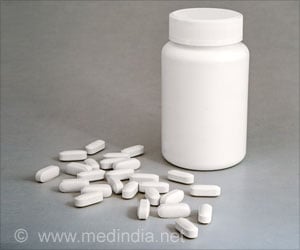A pain drug that can kill both replicating and non-replicating drug resistant tuberculosis has been identified by Weill Cornell Medical College researchers.

Weill Cornell''s Dr. Carl Nathan and his research team found what they call the "completely surprising" ability of oxyphenbutazone to kill drug resistant TB after testing thousands of approved drugs against the bacteria. This repurposing of agents already on the market can lead to quicker testing for new uses.
"This agent might help save lives if there was a way to test it in TB patients," says Dr. Nathan. Oxyphenbutazone went on the market as a patented drug for arthritis-like pain in the early 1950s, and lost its patent and market dominance by the 1970s.
"It is difficult today to launch clinical studies on a medication that is so outdated in the United States, that it is mainly used here in veterinary medicine to ease pain," says the study''s senior author, Dr. Nathan, chairman of the Department of Microbiology and Immunology, the R.A. Rees Pritchett Professor of Microbiology, and the director of The Abby and Howard Milstein Program in the Chemical Biology of Infectious Disease at Weill Cornell. "No drug firm will pay for clinical trials if they don''t expect to make a profit on the agent. And that would be the case for an off-patent drug that people can buy over the counter for pain in most of the world."
He adds that oxyphenbutazone, best known under the trademark name of Tandearil, does have some established toxicities, "and is not a drug you should take for aches and pains if a safer alternative is available." But the drug''s major toxicities appear to be less frequent than the major side-effects of the drug regimens that are currently used to treat TB, he says.
Treating the TB that Hides
Advertisement
Nonetheless, TB becomes active in enough people that it is the leading cause of death in humans from a bacterial infection. It is difficult to treat, and the bacteria can become resistant to therapy. TB treatment in a drug-sensitive patient takes six months, using a combination of agents. If the TB is sensitive to these first-line agents and the therapy is completed with full-strength, non-counterfeit drugs, up to 95 percent of patients can be cured.
Advertisement
A major issue in treating TB is that the bacteria can "hide out" in the body in a non-replicating form, even when a TB patient is undergoing treatment.
To find agents that could attack non-replicating TB, Dr. Nathan''s research team first identified four conditions that keep bacteria in that state within the human body: low oxygen, mild acidity, a fat instead of sugar to eat and a small amount of the natural defense molecule nitric oxide.
The research team replicated those conditions in the test tube and then methodically tested the effectiveness of thousands of agents against the bacteria. After testing 5,600 drugs, researchers found oxyphenbutazone.
Researchers then delved into the mechanism by which oxyphenbutazone kills TB and found that the conditions that allow the bacterium to remain dormant modify the drug to the point that it starts reacting against both non-replicating and replicating TB. "When this happens, TB can''t defend itself and dies," Dr. Nathan says.
But the researchers were unable to test oxyphenbutazone in mice, because the animals metabolize the drug to an inactive form far faster than humans.
"This makes testing the drug for TB use in humans problematic since the FDA requires preclinical animal testing studies for safety and efficacy," Dr. Nathan says. "Yet there is a long track record of oxyphenbutazone''s relatively safe use in hundreds of thousands of people over decades."
Dr. Nathan and his team are continuing their research, testing hundreds of thousands of compounds for their action against TB. His team has already found another approved drug, nitazoxanide, to be effective against the bacteria, publishing his findings in 2009.
Nitazoxanide, a drug with an excellent safety record, is still on patent for use against some infections caused by other microbes. Discussions have been held about testing it in TB, Dr. Nathan says, but have stalled because of the same problem as oxyphenbutazone. The drug is metabolized so quickly in mice that it cannot be tested against experimental TB in that species.
For both oxyphenbutazone and nitazoxanide, Dr. Nathan argues that the requirement for testing in animals with experimental TB should be waived, because these agents work against TB in the test tube, have already been used with relative safety in people and might address an urgent need for treatment of a contagious disease with high mortality and few other treatment options.
This research was supported by the Tuberculosis Drug Accelerator Program of the Bill and Melinda Gates Foundation and the Abby and Howard P. Milstein Program in Chemical Biology of Infectious Disease.
Source-Newswise















